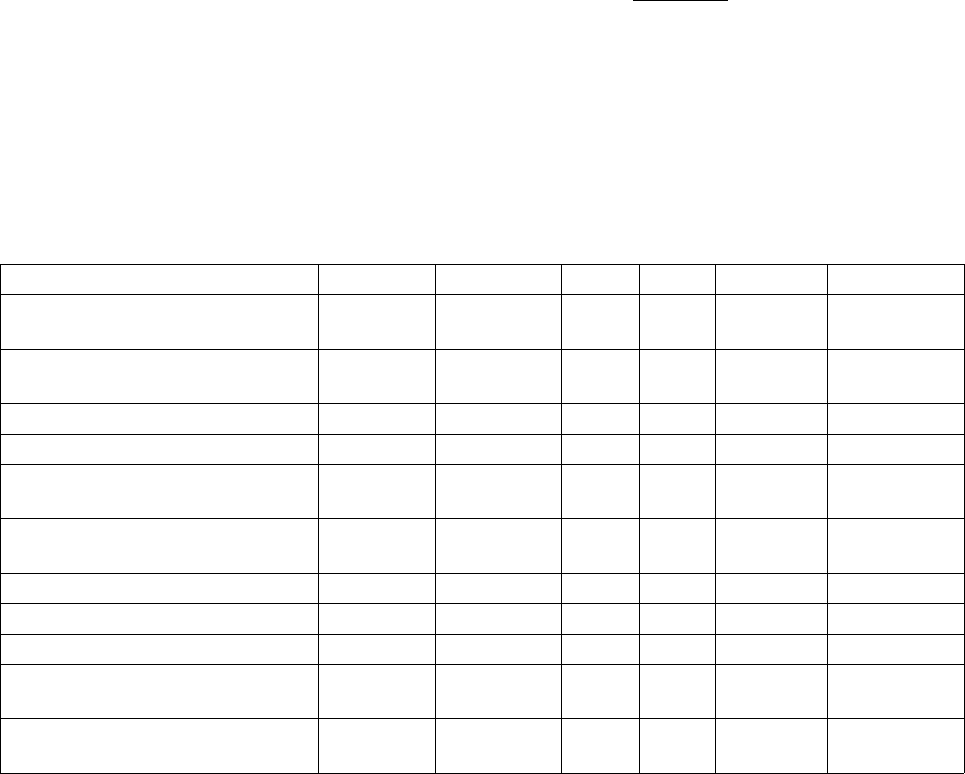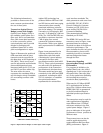
18
HFBR-5205/-5205T
Receiver Optical and Electrical Characteristics
(T
A
= 0°C to 70°C, V
CC
= 4.75 V to 5.25 V)
Parameter Symbol Min. Typ. Max. Unit Reference
Input Optical Power P
IN Min.
(W) -30 dBm avg. Note 16
Minimum at Window Edge Figure 10
Input Optical Power P
IN Min.
(C) -31 dBm avg. Note 17
Minimum at Eye Center Figure 10
Input Optical Power Maximum P
IN Max.
-14 dBm avg. Note 16
Operating Wavelength λ 1260 1360 nm
Systematic Jitter Contributed SJ 0.2 1.2 ns p-p Note 18
by the Receiver
Random Jitter Contributed RJ 1 1.91 ns p-p Note 19
by the Receiver
Signal Detect - Asserted P
A
P
D
+ 1.5 dB -31 dBm avg. Note 20
Signal Detect - Deasserted P
D
-45 dBm avg. Note 21
Signal Detect - Hysteresis P
A
- P
D
1.5 dB
Signal Detect Assert Time 0 55 100 µs Note 22
(off to on)
Signal Detect Deassert Time 0 110 350 µs Note 23
(on to off)
Notes:
1. This is the maximum voltage that
can be applied across the Differential
Transmitter Data Inputs to prevent
damage to the input ESD protection
circuit.
2. The outputs are terminated with
50 Ω connected to V
CC
-2 V.
3. The power supply current needed to
operate the transmitter is provided
to differential ECL circuitry. This
circuitry maintains a nearly con-
stant current flow from the power
supply. Constant current operation
helps to prevent unwanted electrical
noise from being generated and
conducted or emitted to neighboring
circuitry.
4. This value is measured with the
outputs terminated into 50 Ω
connected to V
CC
-2 V and an Input
Optical Power level of -14 dBm
average.
5. The power dissipation value is the
power dissipated in the receiver
itself. Power dissipation is calcu-
lated as the sum of the products of
supply voltage and currents, minus
the sum of the products of the output
voltages and currents.
6. This value is measured with respect
to V
CC
with the output terminated
into 50 Ω connected to V
CC
-2 V.
7. The output rise and fall times are
measured between 20% and 80%
levels with the output connected to
V
CC
-2 V through 50 Ω.
8. These optical power values are
measured with the following
conditions:
• The Beginning of Life (BOL) to
the End of Life (EOL) optical
power degradation is typically
1.5 dB per the industry conven-
tion for long wavelength LEDs.
The actual degradation observed
in Agilent’s 1300 nm LED products
is <1 dB, as specified in this
datasheet.
• Over the specified operating voltage
and temperature ranges.
• With 25 MBd (12.5 MHz square-
wave) input signal.
• At the end of one meter of noted
optical fiber with cladding modes
removed.
The average power value can be
converted to a peak power value by
adding 3 dB. Higher output optical
power transmitters are available on
special request.
9. The same comments of note 9 apply
except that industry convention for
short wavelength LED (800 nm)
aging is 3 dB. This value for Output
Optical Power will provide a
minimum 6 dB optical power budget
at the EOL, which will provide at
least 150 meter link lengths with
margin left over for overcoming
normal passive losses, such as in-
line connectors, in the cable plant.
The actual degradation observed in
normal commercial environments
will be considerably less than this
amount with Agilent’s 800 nm LED
products. Please consult with your
local Agilent sales representative for
further details.
10. The Extinction Ratio is a measure of
the modulation depth of the optical
signal. The data “0” output optical
power is compared to the data “1”
peak output optical power and


















